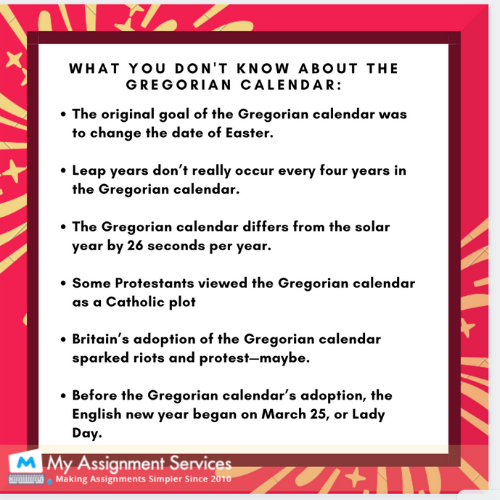The Julian calendar, introduced by Julius Caesar in 46 BC, was based on a 365-day year with an extra day added every four years, known as a leap year. However, the Julian calendar had a slight miscalculation in the length of a year, resulting in a discrepancy of about 11 minutes per year.
By the 16th century, the Julian calendar had drifted significantly from the solar year, causing seasonal drifts and inaccuracies in the calculation of religious holidays, particularly Easter.
Transition From Julian To Gregorian Calendar
The Gregorian Calendar
To address these issues, Pope Gregory XIII introduced the Gregorian calendar in 1582. The Gregorian calendar made adjustments to the Julian calendar by skipping leap years in century years not divisible by 400 (e.g., 1700, 1800, 1900) and refining the calculation of leap years.
The transition from the Julian to the Gregorian calendar required the removal of ten days in October 1582 to align the calendar with the solar year. This change was met with resistance in some regions, leading to discrepancies in calendar usage for several centuries.
Impact and Adoption
The adoption of the Gregorian calendar varied across different countries and regions, with Catholic countries leading the transition. Protestant countries and Orthodox churches were more resistant to the change, leading to a gradual adoption over time.
Today, the Gregorian calendar is the most widely used calendar system in the world, with most countries following its standard for civil and religious purposes. The transition from the Julian to the Gregorian calendar marked a significant shift in the way time is measured and organized globally.
